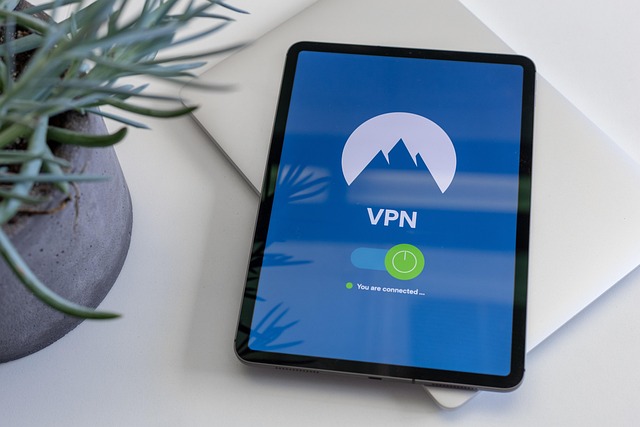How to Protect Your Online Privacy in 2025: Simple Guide
Learn how to protect your online privacy in 2025. Simple tips on passwords, VPNs, and safe browsing to keep your personal data secure
Why Online Privacy in 2025 Matters? In 2025, protecting your online privacy is no longer optional—it’s survival. Every click, search, and purchase generates data that companies, hackers, and even governments want.
Your smartphone knows your habits, your wearables track your health, and your apps collect sensitive financial information.
The internet has become part of our daily lives, but with every click and login, you’re leaving behind digital footprints. From hackers to advertisers, someone is always trying to track your activity. Protecting your online privacy isn’t just about avoiding scams—it’s about keeping your personal and financial life safe. In this guide, you’ll learn practical steps to stay secure, from using Google’s 2-Step Verification to building stronger passwords following NIST guidelines.
Whether you’re browsing on a phone or laptop, these tips will help you stay one step ahead.
Using the latest iOS phone And biggest AI phone Know about the iPhone 15 vs Samsung Galaxy S24: The 2025 Flagship Showdown
Yet with the right tools and habits, you can regain control. This step-by-step online privacy guide 2025 will help you lock down devices, reduce risks, and protect your identity while still enjoying the best of technology.
The Growing Threats to Your Digital Life

Why is online privacy more critical now than ever?
- Data Breaches: Over 22 billion records were exposed globally in 2024 alone (CSO Online).
- Smartphone Tracking: Popular apps like TikTok, Facebook, and Instagram still collect extensive data in 2025.
- Financial Risks: With digital banking and mobile payments on the rise, scammers target financial data aggressively.
And here’s the catch: it’s often the small things—like reusing a password or ignoring app permissions—that open the biggest holes.
Step 1: Master Your Passwords and Authentication

Passwords remain the first line of defense, yet they’re also the weakest link if mishandled.
Best Practices
- Use unique, long passwords for every account.
- Store them in a password manager like Bitwarden, 1Password, or Dashlane.
- Turn on Multi-Factor Authentication (MFA) using apps like Google Authenticator or hardware keys like YubiKey.
Real-Life Example
In 2024, a Nigerian fintech startup lost customer trust when hackers guessed reused employee passwords. Switching to password managers and mandatory MFA cut breach attempts by 90%.
Step 2: Keep Your Devices Updated and Secure

Hackers thrive on old, unpatched systems.
- Enable automatic updates for your operating system and apps.
- Use security software (e.g., Kaspersky, Norton, or Bitdefender).
- Encrypt your device storage—on iPhone this is default, and Android offers it under “Security settings.”
Internal Connection: Just like cars need scheduled servicing (Car Maintenance Guide 2025), your digital devices need consistent updates to avoid breakdowns.
Step 3: Audit and Control App Permissions

Apps often ask for more access than they need.
- Review permissions monthly.
- Disable access to camera, microphone, and location unless essential.
- On Android 14 and iOS 18, use “Permission Dashboard” to monitor app behavior.
Case Study: A rideshare driver discovered a photo editing app constantly accessing GPS in the background. Removing it extended battery life and reduced data leakage.
Step 4: Encrypt Your Connections with VPNs

A Virtual Private Network (VPN) masks your IP and secures your internet traffic.
- Best picks for 2025: NordVPN, Surfshark, ExpressVPN.
- Avoid free VPNs—they often sell your data.
- Always connect to a VPN when on public Wi-Fi.
Step 5: Use Privacy-Focused Browsers and Search Engines

Google Chrome dominates, but it’s also a data goldmine. Safer options exist.
- Browsers: Brave, Firefox, and Tor.
- Search Engines: DuckDuckGo or Startpage.
Pro Tip: Brave blocks ads and trackers by default, improving both privacy and battery life on smartphones.
Step 6: Secure Messaging and Encrypted Communication

Communication privacy is often underestimated.

- Best Apps: Signal, iMessage, WhatsApp (with end-to-end encryption).
- Disable cloud backups if they store messages unencrypted.
- Use disappearing messages for sensitive conversations.
Step 7: Protect Social Media and Personal Sharing

Social media is a privacy minefield.
- Restrict profile visibility to friends.
- Avoid oversharing travel plans or financial updates.
- Regularly review third-party app integrations.
Case Study: In 2025, UK thieves used Instagram travel posts to target empty homes. Simple privacy settings could have prevented it.
Step 8: Safeguard Your Wearables and Smart Accessories

Smartwatches, earbuds, and fitness trackers collect intimate data.
- Samsung Galaxy Buds FE encrypts call data for safer communication.
- Xiaomi Smart Band 8 Pro emphasizes secure health tracking.
- Always update firmware and pair devices securely.
Step 9: Financial Privacy and Protecting Transactions

Digital wallets and mobile banking are everywhere, but so are scams.
- Only use official banking apps from trusted sources.
- Enable transaction alerts.
- Use credit cards instead of debit cards for better fraud protection.
Learn how to avoid financial scams in Investment Scams to Avoid in 2025.
Step 10: Build a Privacy-First Mindset for Daily Life
- Be skeptical of free apps—if it’s free, you are the product.
- Teach kids digital safety basics early.
- Treat personal data like cash—spend carefully.
Real-Life Case Studies: Privacy Wins & Losses
- Win: A Kenyan journalist avoided spyware by using Signal and a VPN, ensuring safe reporting.
- Loss: A US student’s entire identity was stolen after falling for a fake scholarship phishing email.
If you ever need to escalate a claim issue, NAIC’s official guide shows how to file a complaint with your state insurance regulator for more formal resolution.
For deeper context on how insurers manage user data, check out our Best Health Insurance Plans for Beginners (Global) post, where we explore provider policies and privacy frameworks.”
“Also, if you’re comparing devices like phones, our iPhone 15 vs Samsung Galaxy S24 article offers a security lens you’ll find interesting.”
Comparison Tables
VPN Comparison (2025)
| VPN | Speed | Servers | Logging Policy | Best For |
|---|---|---|---|---|
| NordVPN | ★★★★★ | 6,000+ | No-logs | All-round use |
| Surfshark | ★★★★☆ | 3,200+ | No-logs | Families (unlimited devices) |
| ExpressVPN | ★★★★★ | 3,000+ | No-logs | Streaming & security |
Password Managers
| Tool | Cost | Platforms | Key Feature |
|---|---|---|---|
| Bitwarden | Free+ | All OS | Open-source transparency |
| 1Password | Paid | All OS | Travel mode for crossing borders |
| Dashlane | Paid | All OS | Dark web monitoring |
If you found this useful, you’ll also enjoy these related guides:
- Car Maintenance Guide 2025 – Why privacy isn’t the only system that needs regular care.
- Electric vs Gas Cars: Which Is Cheaper Long-Term? – A great example of making smart tech investments.
- Invest Smartly Without Losing Money: Beginner’s Guide – Protecting your money is just as important as protecting your data.
FAQs About Online Privacy in 2025
Q1. Is using a VPN legal in 2025?
Yes, VPNs are legal in most countries, though some restrict usage.
Q2. What is the single most important privacy step?
Enabling Multi-Factor Authentication is the quickest, most effective step.
Q3. Can hackers still access my phone if I do all this?
No method is 100% foolproof, but these steps reduce risks by over 90%.
Take Back Control of Your Digital Life
Online privacy is your digital insurance policy. Just as you wouldn’t leave your car uninsured, don’t leave your personal data exposed. Start small—enable two-factor authentication, use a trusted VPN like ProtonVPN, and review your security settings regularly.
🔗 Related: Want to secure your devices further? Check out our iPhone 15 vs Samsung S24 showdown to see how the latest smartphones handle security and privacy.
What do you think? Share your favorite privacy tool in the comments—we’d love to hear your experience.
online privacy isn’t a luxury—it’s a necessity for financial security, mental peace, and personal safety. By mastering passwords, auditing apps, using VPNs, encrypting communication, and thinking privacy-first, you build a shield against the digital world’s biggest risks.
Your turn: What’s the #1 privacy tip you follow daily? Share your best strategy in the comments below so we can all learn and stay safer together.




Современные решения в сфере технологии автоматизации в логистике помогают значительно повысить эффективность и сократить затраты на перевозку и хранение товаров.
Только таким образом компании могут гарантировать высокий уровень обслуживания.
3д сканер купить
Современные 3D-сканеры находят широкое применение в самых разных сферах, от медицины до архитектуры.
Внедрение WMS системы значительно улучшает эффективность управления складскими процессами.
Подготовка персонала является важным шагом для успешной реализации WMS.
Your passion for what you do is evident in every post It’s inspiring to see someone truly fulfilling their purpose and making a positive impact
Thank you very much! I appreciate your review and feedback also please bookmark, subscribe to our newsletter too.